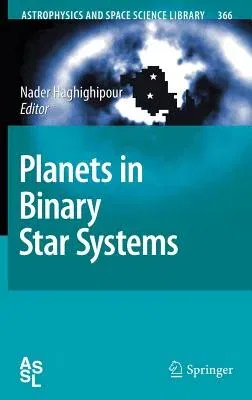Planets in Binary Star Systems (2010)Hardcover - 2010, 5 July 2010

Qty
1
Turbo
Ships in 2 - 3 days
In Stock
Free Delivery
Cash on Delivery
15 Days
Free Returns
Secure Checkout

Part of Series
Astrophysics and Space Science Library
Part of Series
Astrophysics and Space Science Library (Hardcover)
Print Length
332 pages
Language
English
Publisher
Springer
Date Published
5 Jul 2010
ISBN-10
9048186862
ISBN-13
9789048186860
Description
Product Details
Book Edition:
2010
Book Format:
Hardcover
Country of Origin:
NL
Date Published:
5 July 2010
Dimensions:
23.37 x
15.75 x
2.29 cm
Genre:
Science/Technology Aspects
ISBN-10:
9048186862
ISBN-13:
9789048186860
Language:
English
Location:
Dordrecht
Pages:
332
Publisher:
Weight:
616.89 gm